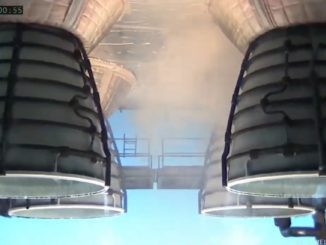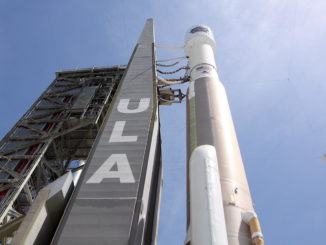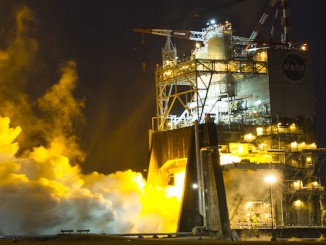NASA plans to fire up a space shuttle-era rocket engine in Mississippi on Thursday for nearly nine minutes to validate upgrades to the powerplant for the Space Launch System, a new mega-rocket under development to boost astronauts on missions to deep space.
The test set to begin at 5 p.m. EDT (2100 GMT) will last for 535 seconds, the time the engine would fire during a real launch. Four of the main engines, which burn super-cold liquid hydrogen and liquid oxygen, will fly on each Space Launch System mission.
Made by Aerojet Rocketdyne, the RS-25 engine set to ignite Thursday is inside a test stand at the Stennis Space Center in southern Mississippi. It generates 512,000 pounds of thrust at sea level when operating at a 109 percent throttle setting.
NASA retained 16 of the shuttle-era engines after the retirement of the reusable spaceship in 2011, enough for four SLS missions beginning with an uncrewed test launch from the Kennedy Space Center in Florida in 2018. The first SLS launch with astronauts aboard an Orion crew capsule is expected in 2021.
The space agency expects to sign a contract for new RS-25 engines in October, said Bill Gerstenmaier, head of NASA’s human spaceflight directorate.
According to Aerojet Rocketdyne, the test Thursday is the sixth in a series of seven engine tests that begin in January. More series of engine firings are scheduled over the next few years to qualify engines for flight and test the Space Launch System’s massive 27-foot-diameter, 200-foot-tall core stage.
For the SLS missions, the RS-25 engines will be fitted with a modernized computer controller. The behemoth booster is also taller than the space shuttle stack, so propellants will enter the engine at higher pressures than during shuttle launches.
And plans call for the engines on the Space Launch System to operate at 109 percent of rated thrust, higher than the 104 percent setting used on shuttle missions.
Email the author.
Follow Stephen Clark on Twitter: @StephenClark1.



